Visiting Sigiriya Rock & The Dambulla Caves, Sri Lanka
This website uses affiliate links which may earn a commission at no additional cost to you. As an Amazon Associate I earn from qualifying purchases.
Updated: 31st August 2015
Fear of heights? No worries. If I climbed Sigiriya Rock, then it can be done!
The world heritage site of Sigiriya is now the top most visited of Sri Lanka’s UNESCO attractions. But fear not; with tourism still to really kick off in Sri Lanka, the crowds aren’t quite overloading it yet.
Also known as Lion Rock, the area surrounding it has some fantastic, potentially pre-historic history. The rock itself is an archaeological treasure; it’s incredible to see such a historic example of city planning.
Sat upon the top of the rock are the ruins (sadly, not too many remains) of the royal palace. Abandoned, it was then used as a monastery for Buddhists until the 14th century. The name ‘Lions Rock’ is due to the gateway entrance to the top, which is formed of the paws of a lion.



Getting Around Sigiriya rock
The best way to really experience the nature around the area (monkeys, elephants and birds being the most famous inhabitants) is to stay locally rather than take a trip in and out.
I checked into Hotel Sigiriya, mainly for the view of the rock behind their pool. With an eco-lodge style to it and monkeys causing havoc around the pool, it didn’t take long to relax into a slower pace of life after escaping the manic mess of Colombo. As with much of the accommodation around here, over-priced seems to be the name of the game. I had booked a couple of months in advance to get a good deal.
To get to Sigiriya itself, it is only a short walk to the ticket entrance. Again, many of the attractions in Sri Lanka are not cheap at all. An entrance ticket to the grounds costs $30.
Once inside, there is plenty of information displayed, as well as the remains and ruins of the buildings which surrounded the rock itself. I would allow a good three hours at least to explore around and up the rock. And don’t go at 1pm like I did. Hot is an understatement!



Climbing Sigiriya Rock
The climb itself starts off gently as you ascend through the stairs built into the rock. I have a massive fear of heights, these didn’t kick in until climbing up the circular staircase which gives you access to the wall paintings, another excellent example of the history preserved within this area.
The walk then (thankfully!) takes you behind a large wall, the Mirror wall. In times gone by, this was a reflective surface; however, not much evidence of this remains.
Once you reach the plateau to ascend the final steps, you are met with the Lions Rock. The two huge paws which mark the entrance to the final staircase. A crazy collection of hornets can also be found here, with cages to jump into if they become provoked. AKA, don’t harass them!
Read more: Sri Lanka travel guide



The views from the top are incredible, looking across the local terrain with its hills, statues and lush plantation are half the magic.
The ruins themselves, although not much to see, still give you a real insight into how much of a task it must have been to construct this city so high up. The waterhole remains, as does much of the floor plan. Personally, I was a little underwhelmed as there wasn’t as much to see as I expected, but climbing Sigiriya rock is still something I would do again.


Need more inspiration ideas of what to do in Sri Lanka?
The Dambulla Caves
The Dambulla Caves is just one of many sights to behold here and is one of Sri Lanka’s UNESCO attractions.
One of the most impressive and one of the eight UNESCO attractions this small island offers up is the incredible Dambulla Caves. To be honest, I don’t think I truly appreciated their beauty until after visiting and looking back at the photos. The details and artwork here are super impressive.
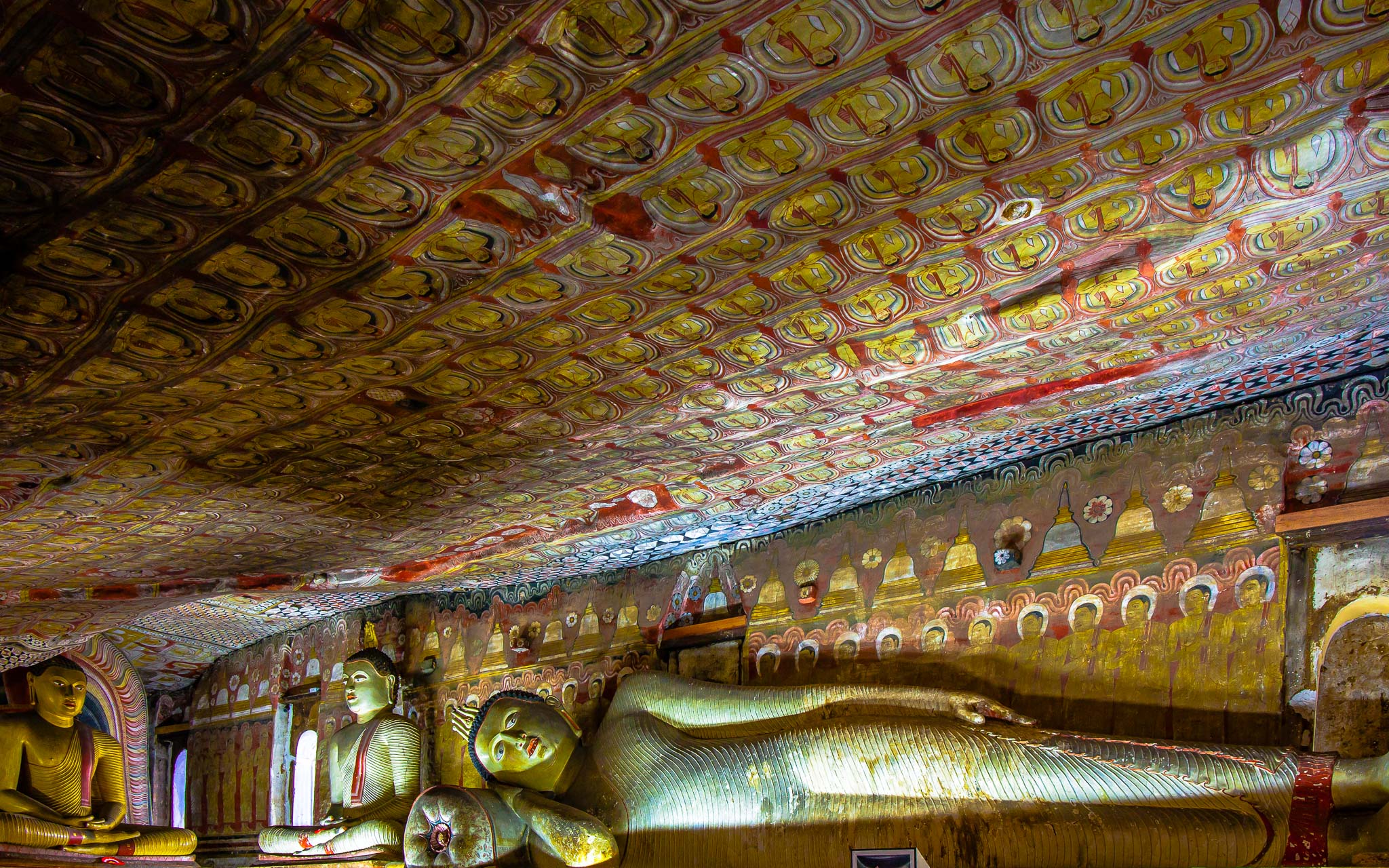
What are the Dambulla Caves?
Sitting on top of a 160-metre high rock, these five caves cut in have been a pilgrim’s destination for centuries. Given the discovery of human skeletons dating back around 3000 years in the local area, it is assumed these caves were homes to pre-historic locals.
There are five caves inside, each with a different interior and statues – though many people a quick glance, would assume they are pretty similar. The monastery dates back to the first century (BC) when it is believed the caves were converted. It has been added to over the years and has been home to many different religions.
The caves you can visit today were restored and re-painted as they stand now by the Kingdom of Kandy in the 18th century.
Each of the five caves varies in purpose, interest and decoration and although I didn’t get a guide whilst I was there, the history I did catch from the tailwind of a small group was pretty interesting so, it might be worth making the investment.
READ MORE: CLIMBING SIGIRIYA ROCK
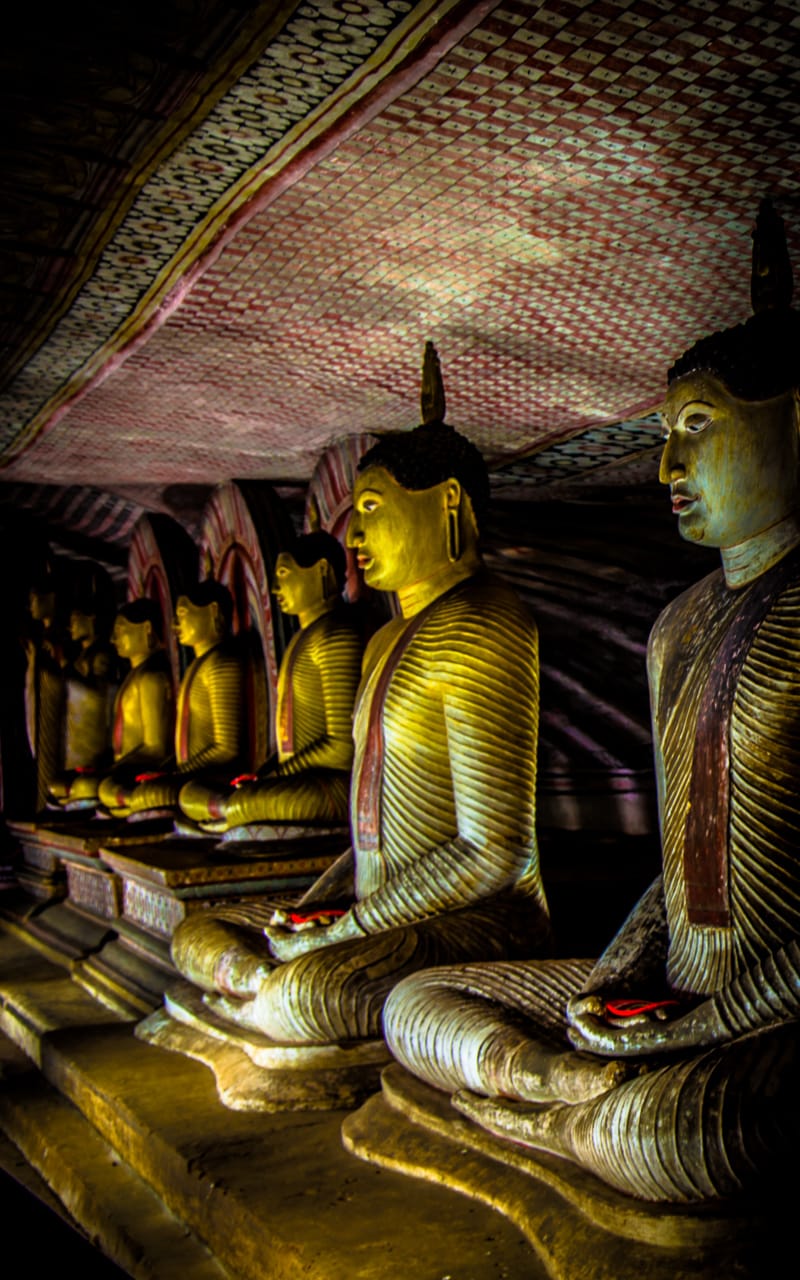
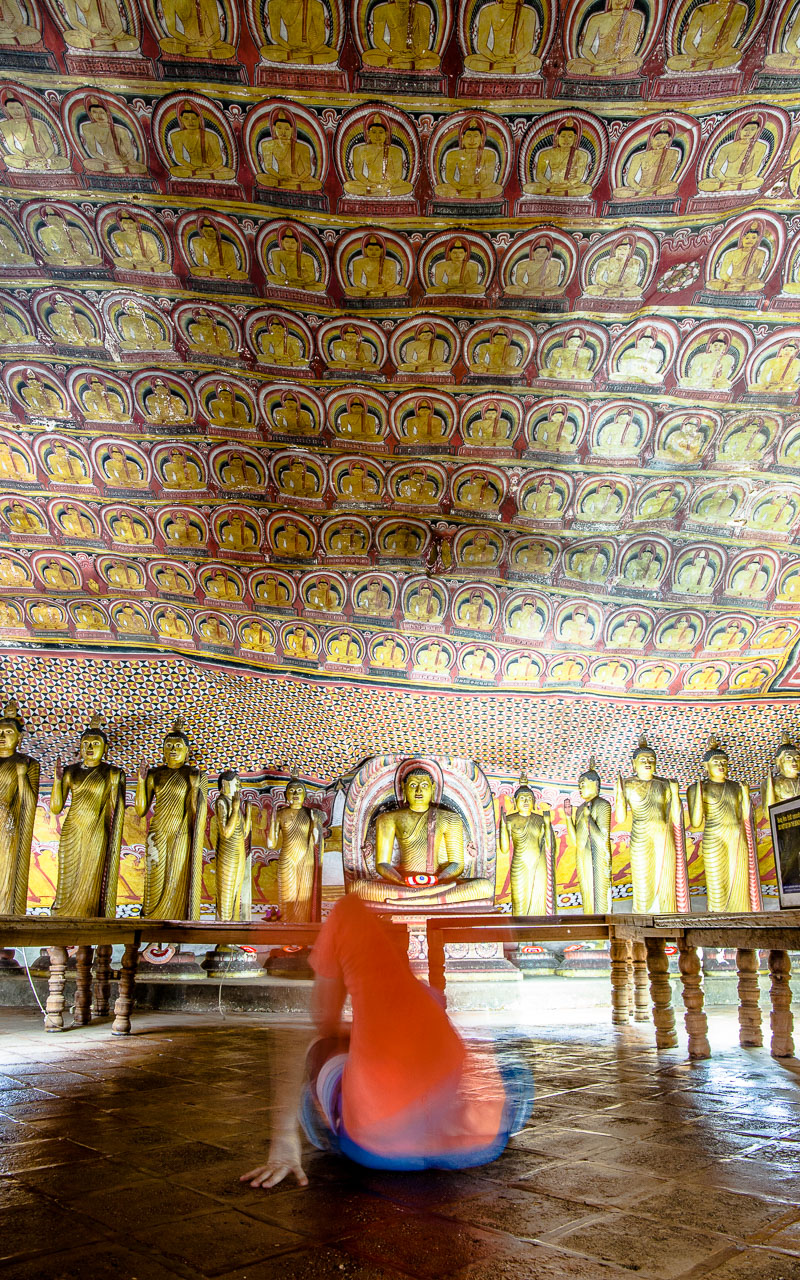
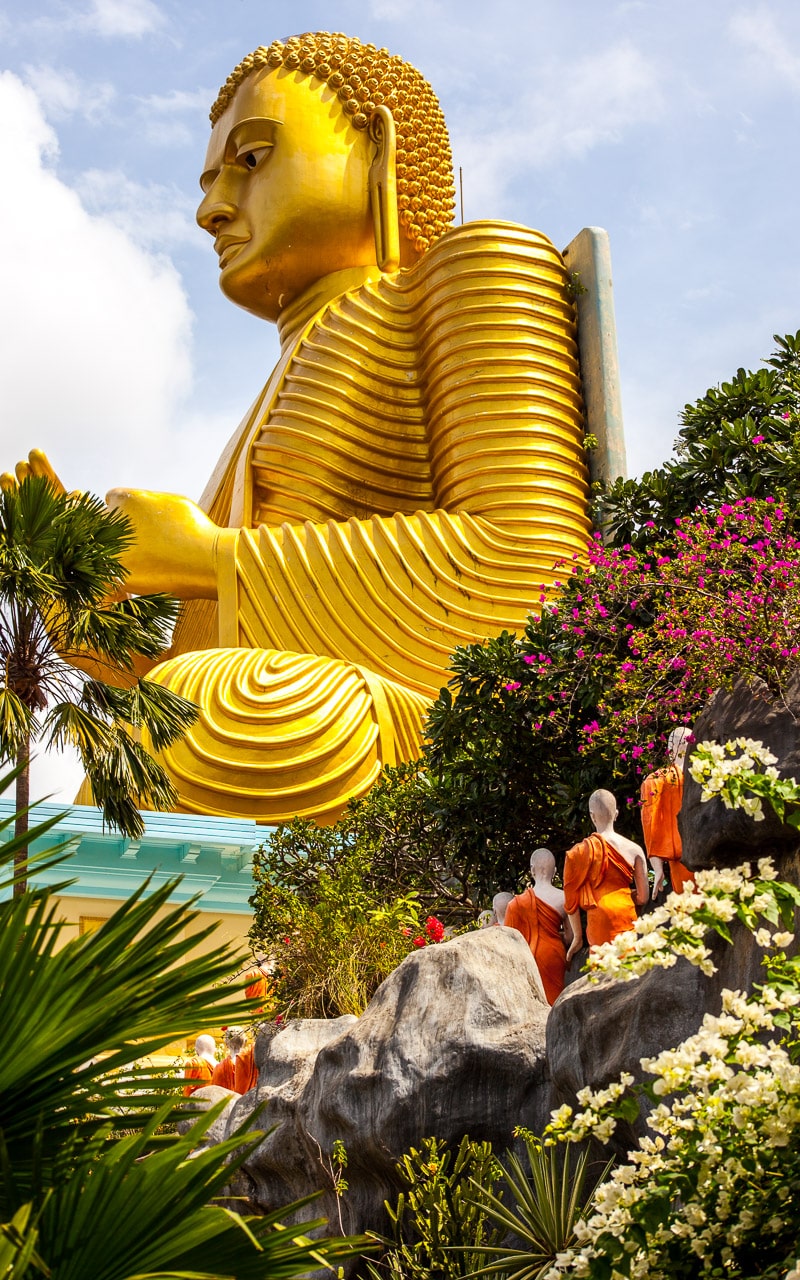
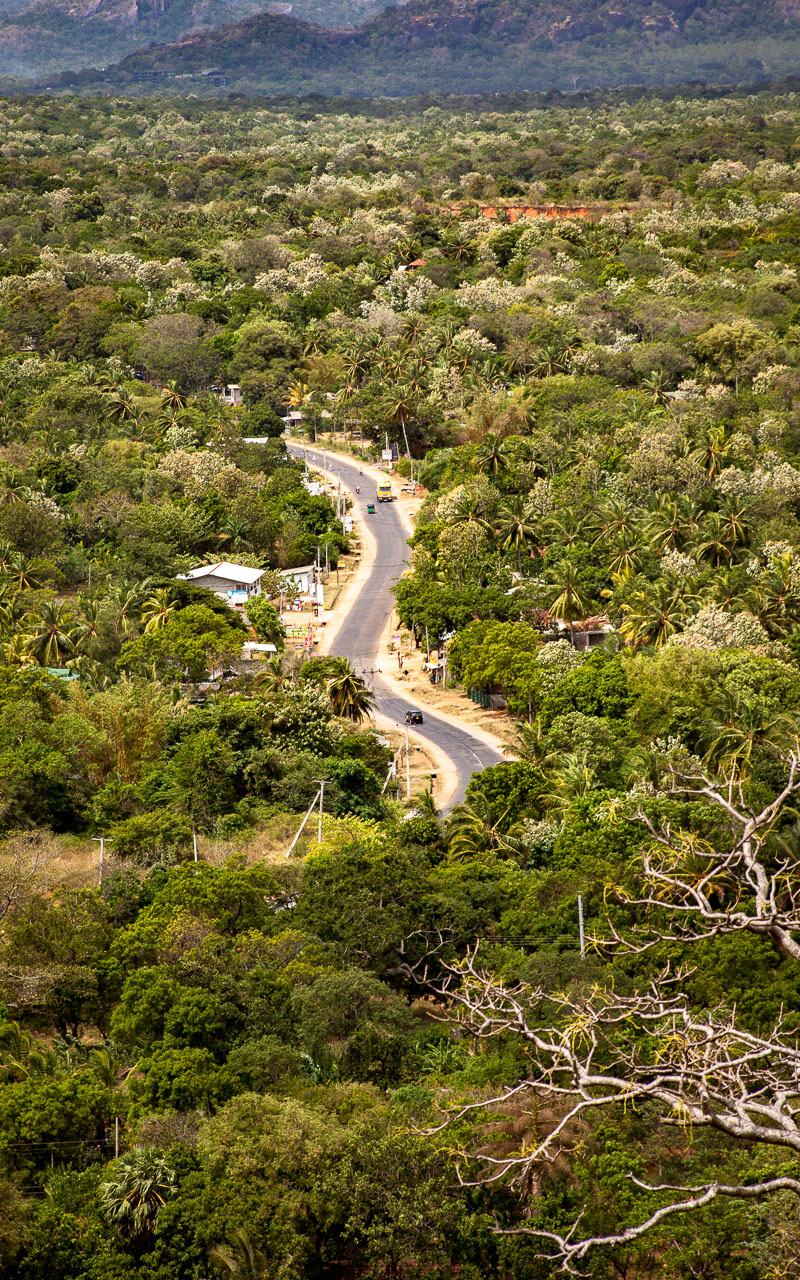
Dambulla Cave Tips
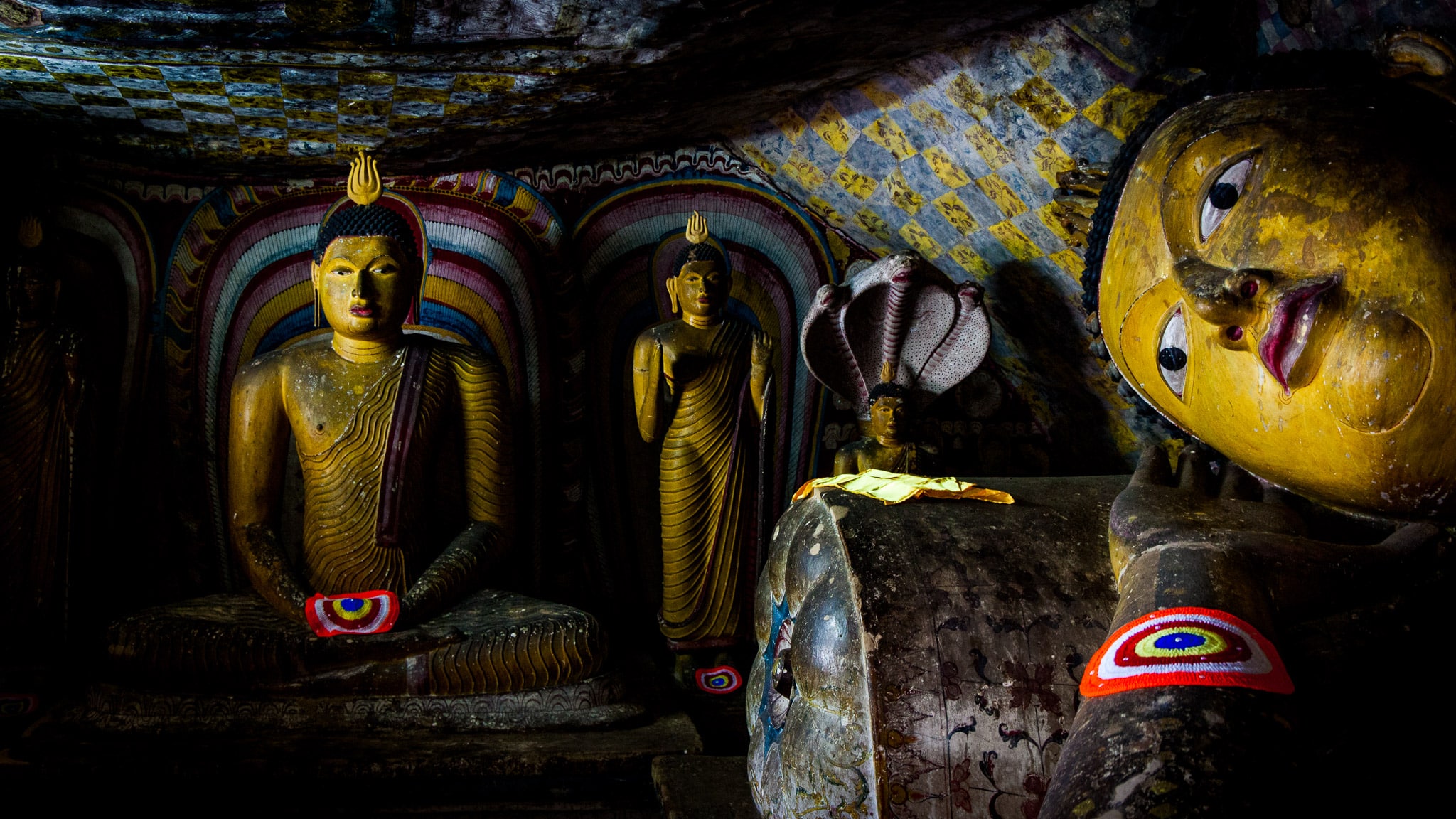
The ticket office is at the bottom of the hill. So, if you get to the top and you have no ticket, you need to come right back down.
The climb could be tough if you are not an overly active person, especially in the midday heat.
Keep an eye out for Monkeys, which can sometimes be seen dotted around the temple. As with most of these poor guys who have been toyed with by humans, they have learnt that stealing stuff usually leads to food, so keep an eye on your shit.
The Golden Temple with the huge buddha at the bottom also has a museum which you can check out.
Grab a torch, which you might get told to put away, but it will allow you to see how impressive the decoration is. I somehow managed to get a few tripod shots, which helped me to capture the detail on the walls and ceiling.
Need to know
Dambulla Caves Opening Times: Officially, the cave temples are open from 7am-7pm but I arrived around lunch time and the ticket office was ‘taking a break’ – so, get used to ‘Sri Lanka’ time
How much to visit the Dambulla caves? The ticket costs 1500 LKR (About £7/$10) however reports from friends who visited a few weeks ago was it was free entry though no one knows why…
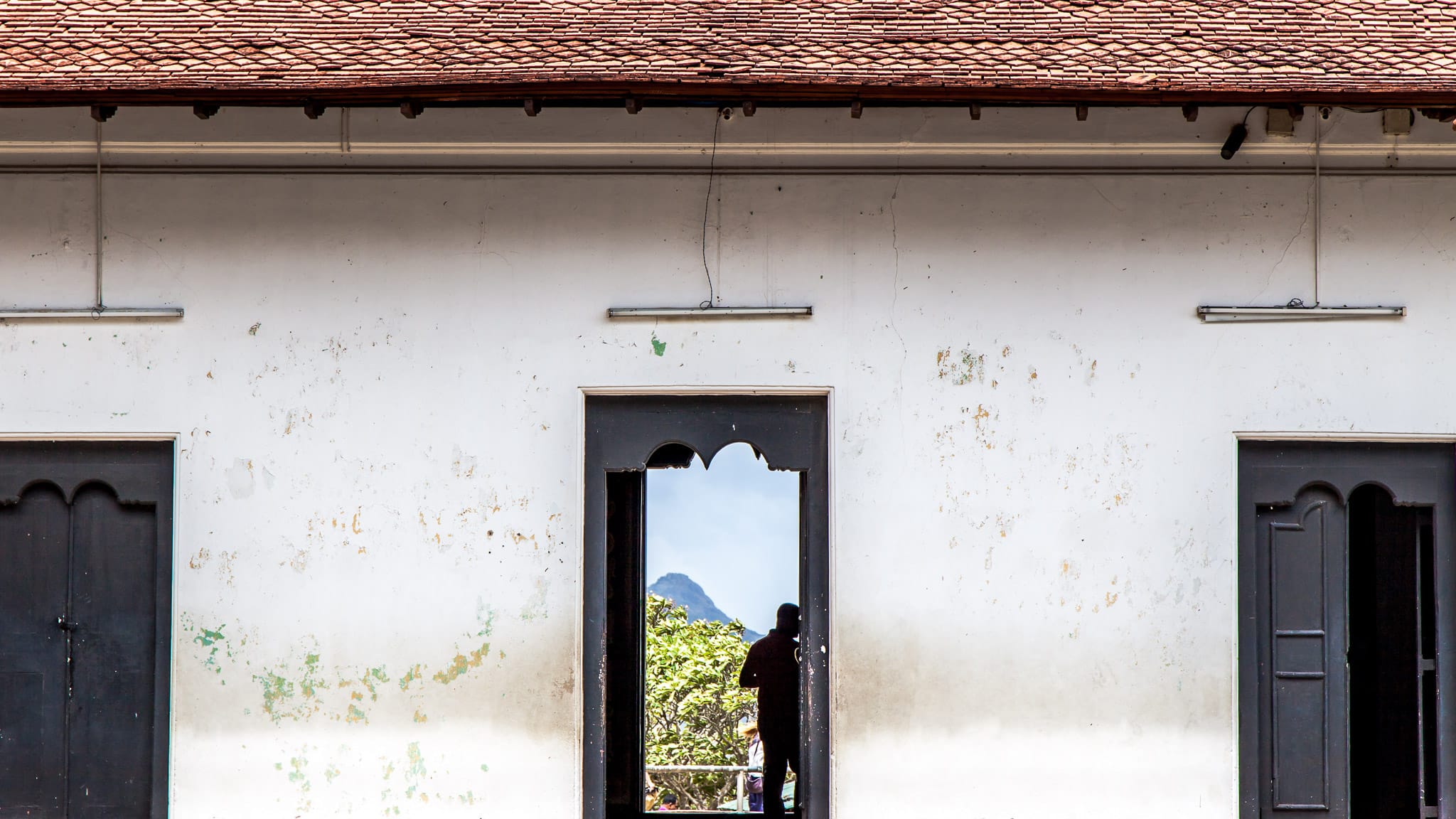
Where to stay: Dambulla is often skipped for the more famous Sigiriya, and whilst there are accommodation options around the cave I personally would recommend staying in Sigiriya and combining the two activities. I stayed at the Hotel Sigiriya which has an awesome pool view of the famous rock.
How to get to Dambulla? From Sigiriya, you could grab a taxi or a tuk-tuk. Otherwise, you can walk to the main road and jump on the local bus which will deposit you at the Dambulla bus terminus for mere pennies and countless entertainment. About a 10/15 minute walk from there down the road you will hit the base of the temple complex.
Read more: Sri Lanka travel guide

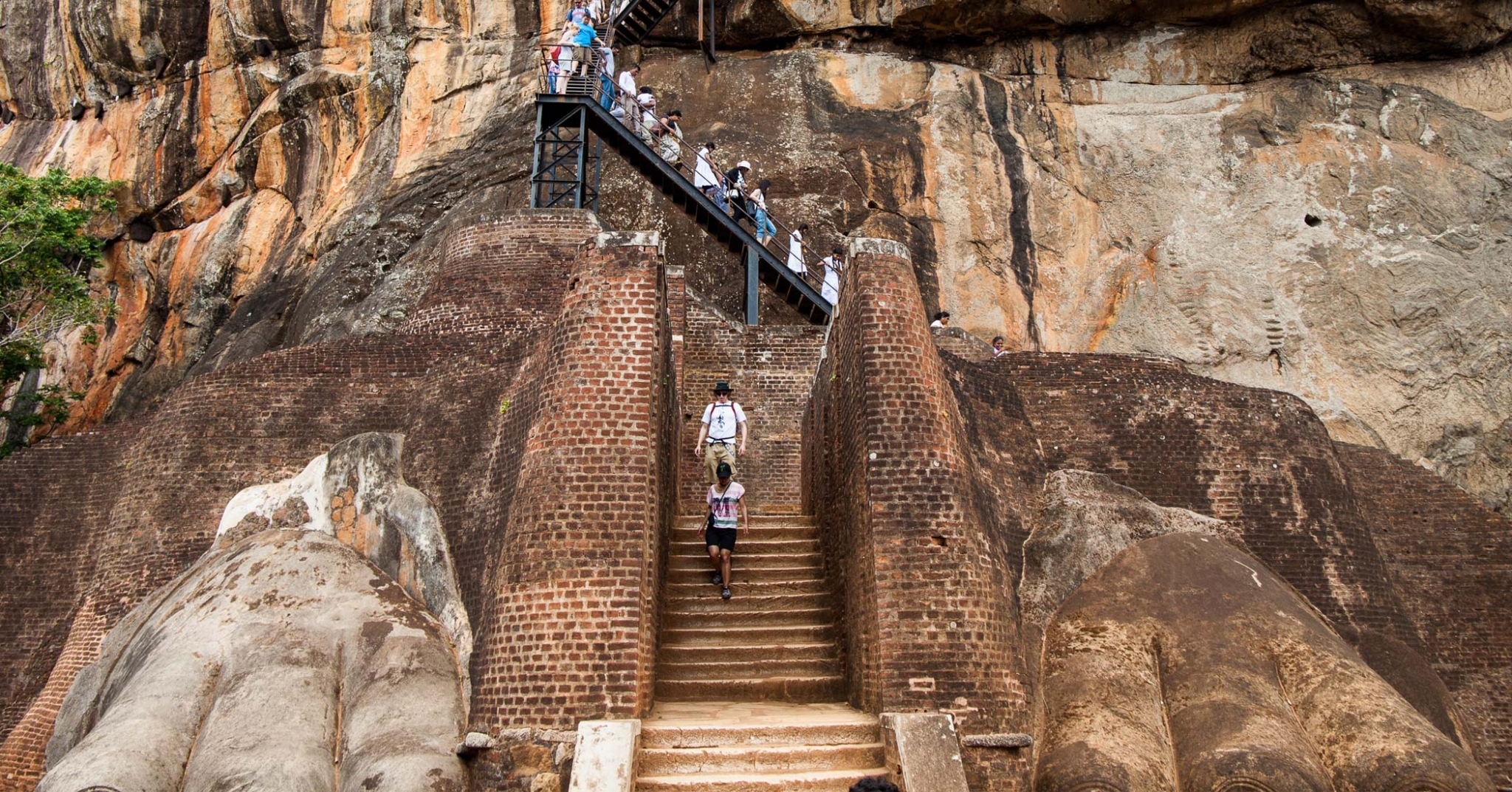



Leave a Reply
Want to join the discussion?Feel free to contribute!